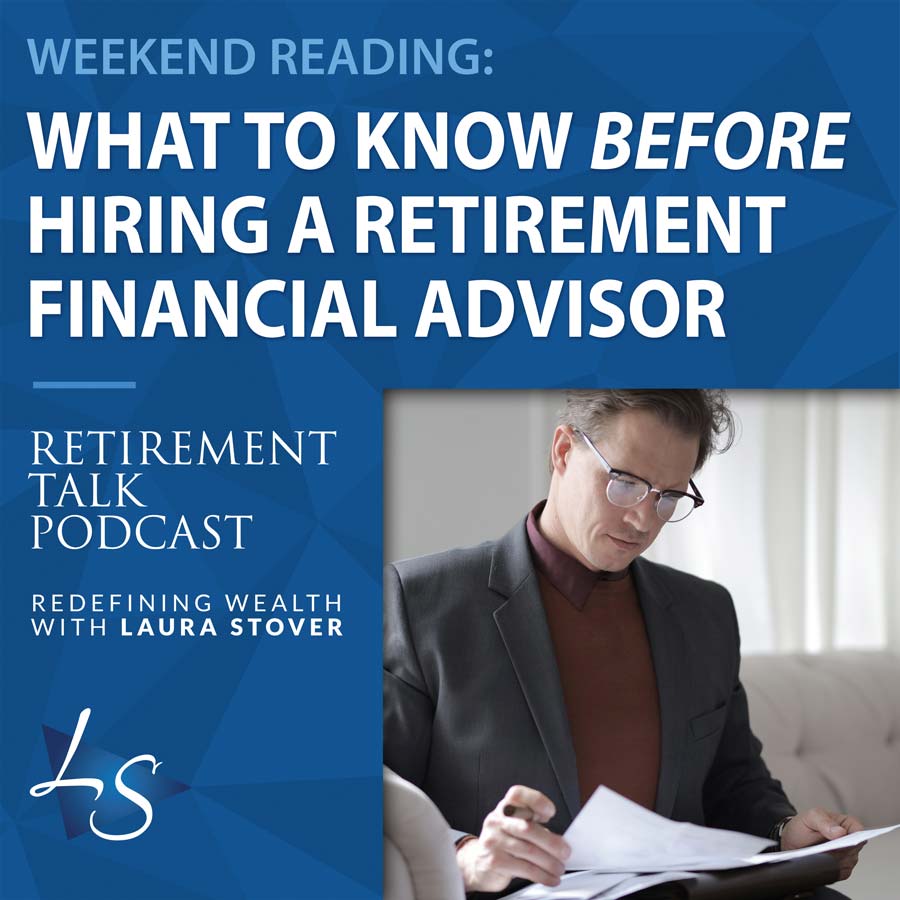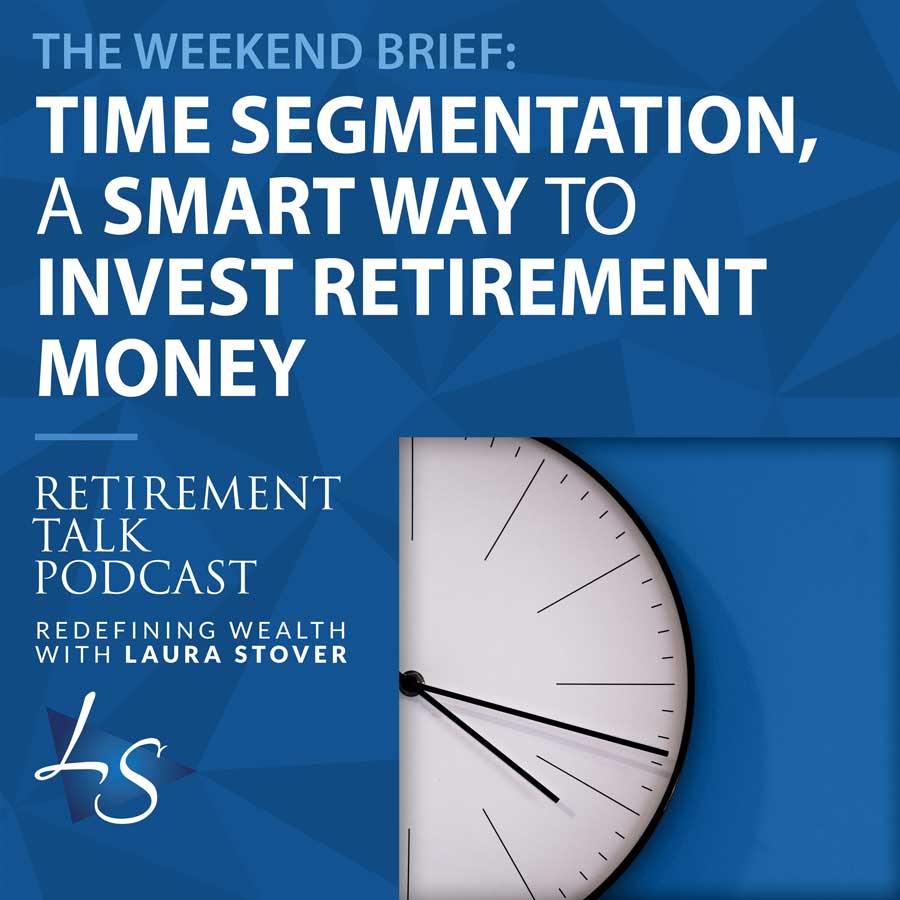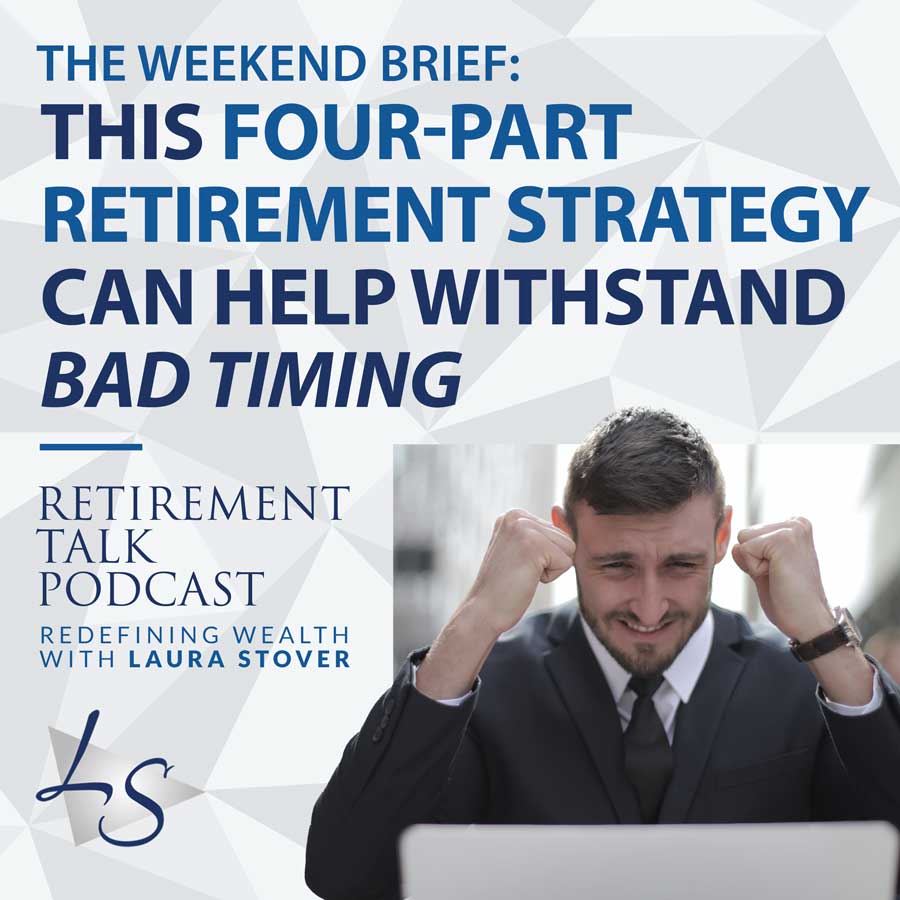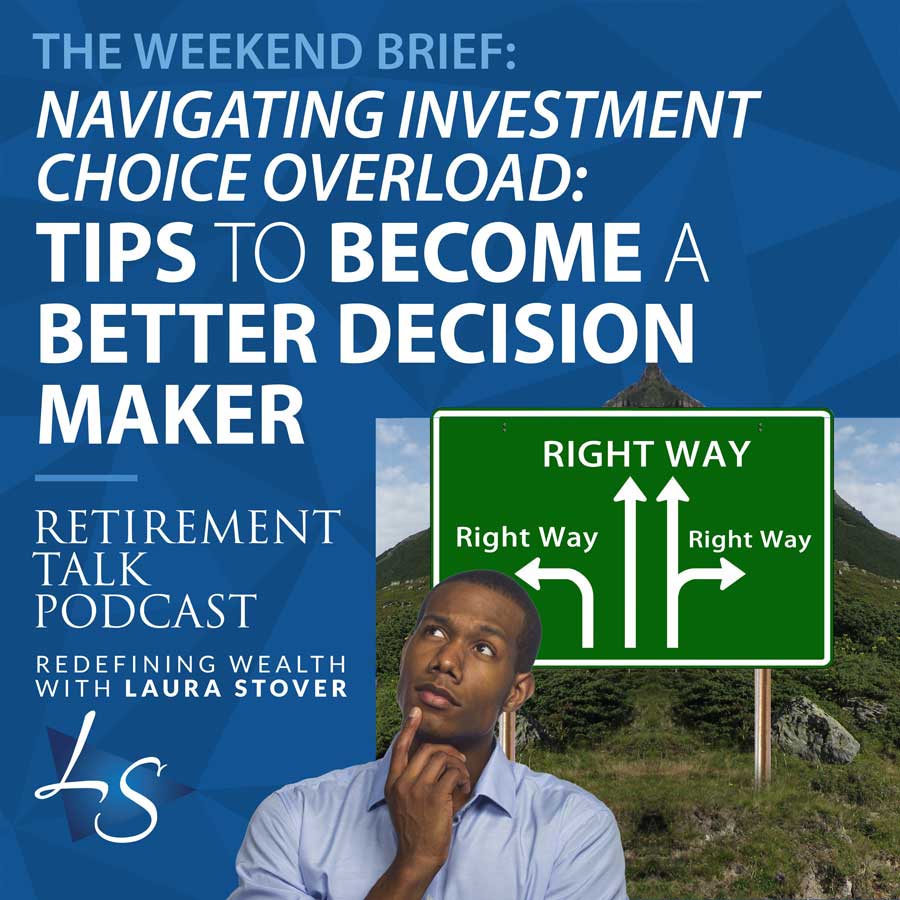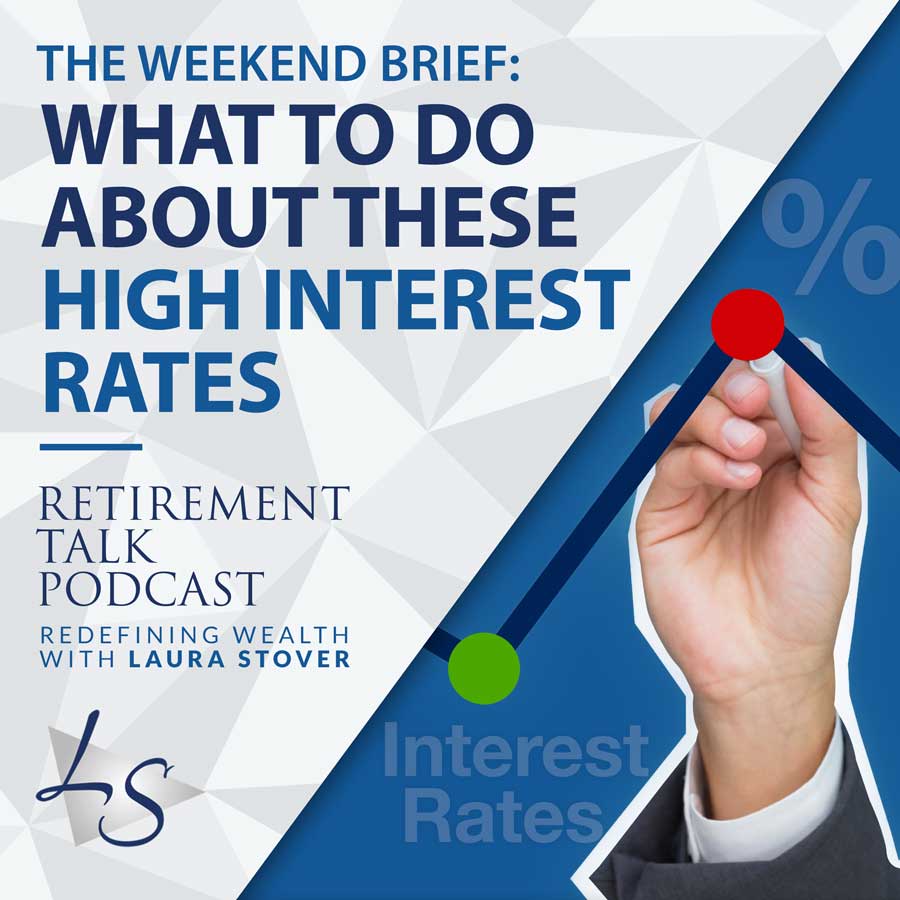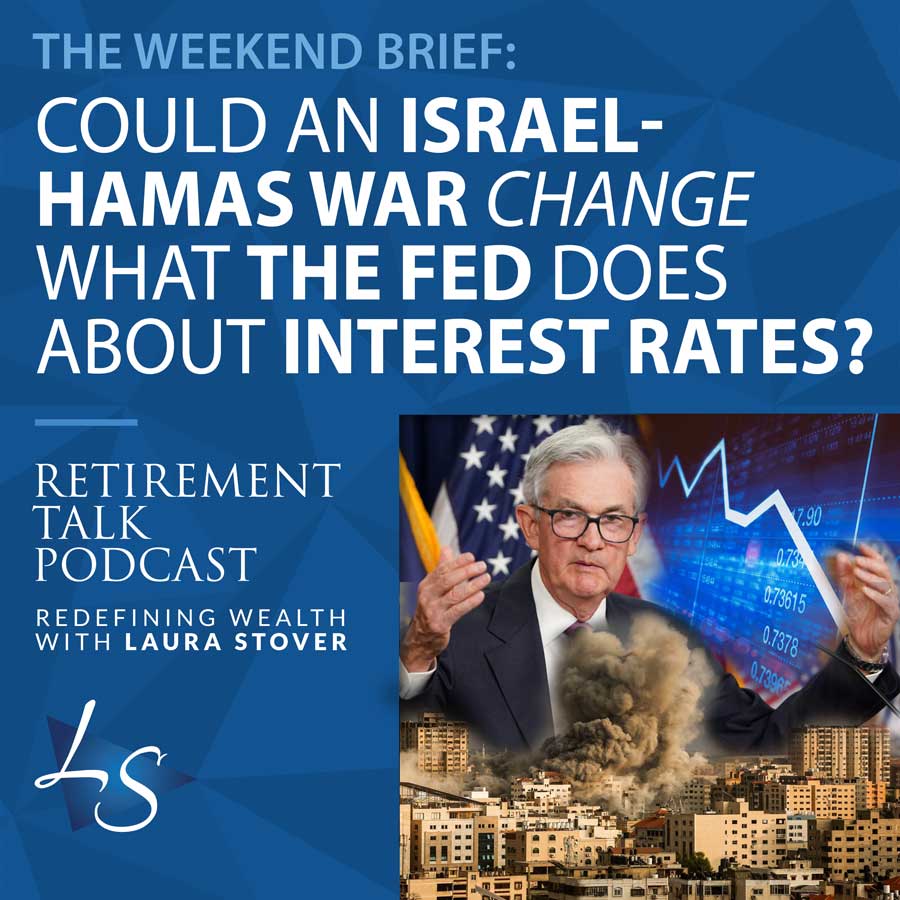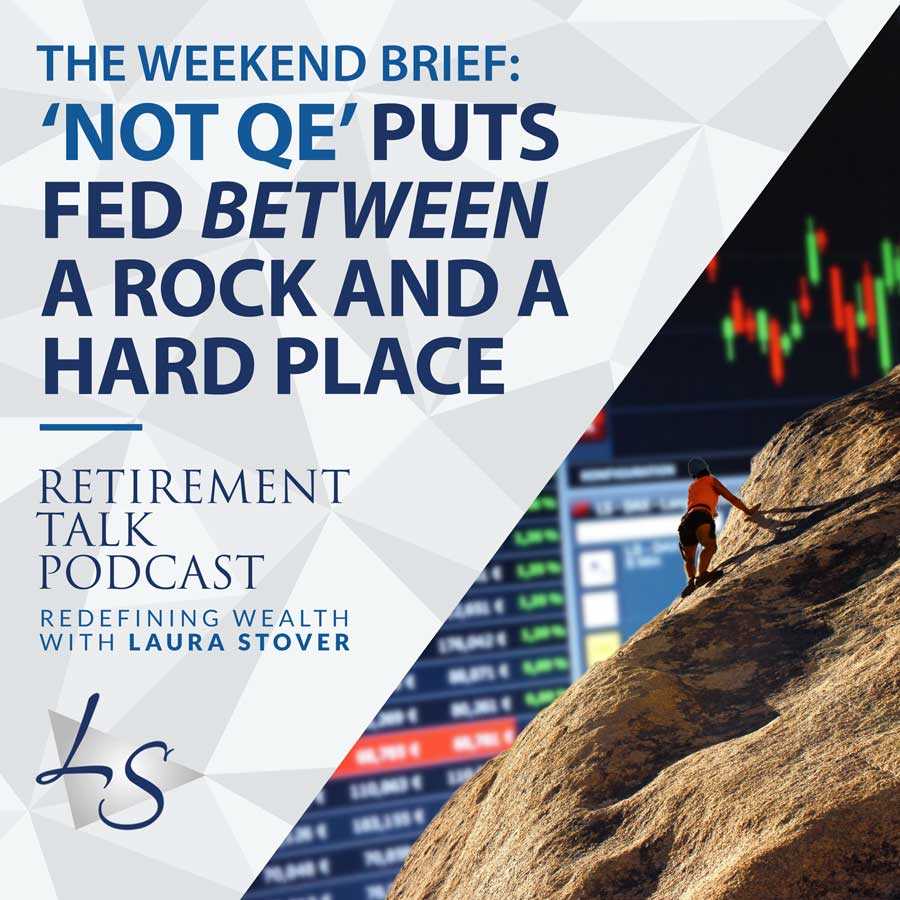When you are looking to work with an advisor, what should you pay attention to? Maybe your advisor was referred to you by a friend or family member. Perhaps you began meeting with them when you were in the accumulation phase of your life and now you are in retirement and facing decumulation. Ask yourself what phase of life you are in and if your advisor is still matching your portfolio needs. On today’s episode, we’ll be discussing what you need to consider before hiring a retirement financial advisor.
The types of planning strategies an advisor implements for young workers is going to look a lot different than it does for those entering the retirement red zone. Furthermore, you want to have a clear understanding of the advisory fees you are paying and what kind of value you are attaining from them. An advisor should know your risks and how those risks align with the income plan you are building for retirement. You don‘t want to work with someone that is only concerned with moving money, but someone that is creating a plan that will match your long term expenses.
Review the article mentioned in today’s show >>
Rate & Review the Podcast on your favorite podcast app!
Show Notes:
2:15 – What type of advisor are you working with?
3:31 – How should you select an advisor?
4:57 – What phase of your financial life are you in?
8:22 – Tools and strategies depending on the phase of your financial life
12:01 – Understanding advisory fees and their value
17:02 – Having a trusted advisor during market turns
19:23 – Sequencing of returns risk
23:56 – Knowing your income plan and balancing risk
27:15 – An advisor that understands your expenses
Links
Schedule a Review: https://redefiningwealth.info/schedule/
Listen & Subscribe
Review the Transcript:
Ron Stutts:
Welcome to Retirement Talk, the redefining wealth show, your source for financial information specifically for pre retirees and retirees. We’re here to help you better navigate during these financial times. We’re here to discuss thoughts and ideas with some of today’s foremost experts in the field of finance and retirement, as well as discuss trending topics and the impact of major legislation that could impact your bottom line. We will break it all down. These discussions can help you make better financial decisions and be informed so you can live the lifestyle you imagine and make better financial choices. Laura Stover is a registered financial consultant and CEO of LS Wealth Management, as well as founder and owner of LS Tax, a consulting firm. She’s been featured in Forbes, CNBC and the Wall Street Journal. I’m Ron Stutts. Our topic for today is what to know before hiring a retirement financial advisor from US News. If you would like to learn more on today’s topic, head on over to redefiningwealth.info and schedule a strategy session. Now, here are your host for today’s show, wealth advisor, Laura Stover, and certified financial planner, Michael Wallin.
Laura Stover:
Hello. Hello. Hello, Michael? How are you?
Michael Wallin:
I am doing fabulous, Laura, and yourself?
Laura Stover:
I’m doing fabulous as well. And another great show in store. I know I say this every week, but these topics are so relevant. The client conversations that we are having on a weekly basis, and it’s such an honor to know so many people are listening. Our downloads continue to increase each month. And if you know somebody, if you like the show, if you know somebody that might benefit from listening, please introduce the show and share it with somebody else. Go to Apple or Spotify, wherever you’re listening to Retirement Talk, The Redefining Wealth Show and give us a rating; an honest rating. And if you find value, others hopefully will as well. And we are here to talk about the most important topic. I say, all the topics are important, but what type of advisor are you working with?
Laura Stover:
Our featured article is from US News here today. And what you need to know; what you need to know before hiring a retirement financial advisor. So a little caveat there, and I’ll just set the stage for the key areas that we really want to cover in what you need to know about this very important topic. So maybe, maybe you hired your advisor while you’re accumulating your retirement nest egg. Maybe during your working years, maybe you are still working. Maybe your friend at the water cooler goes to the broker down the road, and you were referred to somebody from a friend or an acquaintance that you know. Maybe you inherited your advisor. Maybe you’re the beneficiary of an account and you just kept the accounts there and you’re working with the same advisor. Why does it matter? It matters a lot because, and this is part of the redefining wealth process that we really want to emphasize.
Laura Stover:
First, we want to break down what phase of your financial life you’re in. That’s one of the key reasons this matters because depending on that question, the different models that advisors can align with, they really cater to different aspects for a lack of specifics, whether you’re in the accumulation phase or the income and distribution phase of retirement. These are some very distinguishing differences. We also want to hit the big fee. Everyone always wants to know, Michael, what do you cost? That question is a fair question. And it seems like the advisors that point out the fees and are the most transparent get asked the most questions. And if you’re not transparent, advisors are never wanting to understand the fee and what they’re getting really for the value of the fee that is being rendered. And then we want to look at the differences in these platforms.
Laura Stover:
What’s in registered investment advisory, versus a brokerage, or a bank brokerage model, and how that parallels with your phase of your financial planning. And lastly, avoiding, this is a big one, especially if you’re in retirement, taking distributions. The big risk is sequence of return risk and why that matters. So let’s start with the phase of your financial life and how that really aligns with how you select an advisor, the way you invest. Maybe right now you’re investing systematically or maybe you’re near retirement. And the big difference really is that buy and hold philosophy when you have a lot of time before you, wouldn’t you agree, Michael?
Michael Wallin:
It is. When we’re looking at using a 401(k), 403(b), 457, during those accumulation phase of a person’s life, and historically, or we look at the age range on that between ages 18 up to about 65, but with a caveat on that, that if somebody’s going to retire at that 65, 66, 67 time period, always remember five to seven years before that you should start changing your philosophy on the way that you’re investing and start remediating some of the risks that you have in your portfolio so that you don’t get caught a year or two before retirement, and you have a huge contraction in the market like we saw in 2001, 2008, and you don’t have an ample amount of time for recovery in the market. The market recovers, but the key is, do you have time on your side for that recovery process before going in and becoming dependent upon those assets? And that’s, as we look at accumulation, and then as we transition in our way of approaching investing strategies is we look at preservation and income.
Michael Wallin:
What we’re looking there is, when are you going to start becoming dependent upon those assets? And should you have your assets directly into equities that you’re going to be dependent upon for income because a contraction in the market while you’re also taking a distribution that is what’s called triple compounding in reverse. It is much different than during the accumulation phase where you are buying assets over that time period. And so you have no distribution coming out. And so you do have average rate of return at that time. And that is in your favor. Preservation and income is a completely different step, a different phase. It should be treated differently. And then ultimately the third phase of everybody’s life is distribution. And is your plan effectively and efficiently structured to mitigate as much taxes as possible as you’re transferring it to those heirs that you have selected for your estate.
Laura Stover:
So, the phase of your financial life, when you have a broader, longer time horizon, maybe you’re systematically investing the static composite models; the buy and hold approach; buying low, selling high, and you’re not taking income out of those dollars. You’re accumulating. Maybe you’re getting an employer match. That’s a big difference. And it’s really a juncture of having a mindset change as you near retirement then in that red zone that we talk about, or in retirement, because now whether you need supplemental income or forced required minimum distributions, at some point, you have to start beginning a withdrawal out of those accounts. And so the mindset and the philosophy really needs to change. So, some of the things we want to think about when we look at buy and hold, versus, that’s also referred to as strategic management, and then we have tactical management.
Laura Stover:
So, some of the tools… Now, let’s just shift. Some of the tools during these phases as… and you can really apply them at any phase if you have lump sums of money, but the whole idea is to preserve the nest egg, to preserve the capital, grow the account, but avoid really large drawdowns. The 20, 30, 40, 50% like we saw back in 2008. Those are the times that that really bites people, and that can create that negative sequence of return. So, by shifting and hedging and mitigating the risk and managing the volatility, that’s a little bit where some of that mindset needs to shift at that income or preservation stage of managing your retirement account.
Michael Wallin:
Well, and Laura, one of the things, I think all of our listeners on here, if we ask them, what does ROI stand for? During your accumulation phase, ROI stands for return on investment. What are you making on that investment? And a way to really understand the difference between accumulation and the preservation and income phase is ROI means something completely different in your preservation and income phase. It means reliability of income. So during your accumulation, you have return on investment. During preservation and income, it is much more that you have a reliability of that income. It’s going to be structured. You can count on it. That’s why many studies have been done of the happiest people that are in retirement are those individuals that have a pension because a pension is reliability of income.
Michael Wallin:
It’s something a person can bank on. They know it’s going to be hitting their check or their checking account or their bank account. It’s going to be hitting those every month. It’s going to be something that if structured correctly is going to be there for their living spouse once they decease. Very similar to the structure of social security. So, that becomes reliability of income. And that’s why accumulating is one thing but once we get in preservation and income, we don’t want the reliability of income to be based upon maybe an equity position, because when equities contract, there’s no reliability.
Laura Stover:
Predictability of income and sustainability because of the other retirement risk, longevity and the inflation, the taxes, the healthcare, all of the many risk that are factored because we’re living longer. So guaranteeing maybe, and this is really how you diversify, making sure you’re not risking the income that you need, but you’re segmenting the assets, [inaudible 00:11:25] monies, like you say, Michael, that you’re not dependent upon today or maybe in a year, but perhaps three years, five years, seven years, 10 years, we segment those out. Maybe employ tactical management and risk management on the growth side of the portfolio but providing solid predictability on the income side. And conservative is not the same as guaranteed. Would you agree?
Michael Wallin:
Absolutely. And that becomes the elements of really an evaluation and talking about evaluation, second points you wanted to hit, today was the advisory fees. And I think this is a very critical area that is important for everybody to look at because advisory fees, you need to understand what you’re paying for and what you’re getting for that. Now many people will sit down and they’ll tell us what their advisory fee is, and they are one dimensional. And so you want to know if that individual that you’re working with approaches you in a multi-dimensional way, because as last time I checked, Laura, I’ve never met a person that was one dimensional. There are many facets of who they are and what’s important to them, and it needs to be approached in that same way. So when you’re looking at an advisory fee, is that going to include money management?
Michael Wallin:
Does that potentially include any third party money managers? Is it going to include the custodial charges, if there is any transaction cost, is it included? Many times we see that the difference between a wrap and a non-wrap account, and that’s a industry terminology that we use; a wrap account, meaning that all of your expenses are wrapped into one expense, versus a non-wrap account, where an individual is going to be responsible for any transaction. So if you are in a investment strategy that has a lot of turnover or subsequent purchases at that time, you could have several transaction fees that runs up and is actually in excess. So a lot of times people come in on the front end and say, well, somebody else’s account or their fees may be lower.
Michael Wallin:
Well, if they’re telling you that they’re running a non-wrap account, and they’re telling you what the fee is on the front end, at the end of the year, you may have actually paid more than what the wrap fee was because of all the transaction costs that we’re seeing. So, those are very important elements that you need to really lay out, and a good advisor is going to have their fee structure laid out. So you understand every component of what you’re paying for and there’s no surprises at the end of the year.
Laura Stover:
And I know [Morning Star 00:14:12] and The Wall Street Journal did a combined study in 2010, analyzing mutual fund costs, for example. And they said that the fee was typically two to three times higher than advertised. And in recent years, they’ve changed some regulations where transparency of this, and it sometimes it’s very hard still today, even for advisors to dig in those prospectuses and try to, as you would say, unpack what those fees are costing. And there’s a little difference in terms of the type of advisor you work with. And I will say, you need to understand, the service is rendered, and what value are you getting in return? And like you said, are they just one dimensional? Is your account, if it goes up or down, is that advisor paid the same regardless? Or there’s some advisory models where if your account doesn’t do as well, the advisory firm isn’t doing as well in the way the fee structure is implemented in that case and all of the services, are you obtaining some tax planning, a proactive plan?
Laura Stover:
How many times a year are you meeting with the advisor? What are the expense ratios? What are the fun costs? What are the turnover ratios? A sales charge. There’s front end, there’s back end. And the list really goes on and on. And 12b-1 fees, it’s a very robust, and sometimes it’s kind of [inaudible 00:15:44] mess for people to really put it in perspective, if they’re just looking at the cheapest index fund, well, that’s good in the accumulation phase, that may make sense. But if we’re trying to have… avoid negative sequence of return, there may be value in paying a little bit of a fee for the tactical management in the other financial planning aspects. So that’s areas that really, you have to weigh that out and make sure you have a full understanding.
Michael Wallin:
And if you’re looking at having somebody that is bound to those type of services, then you should be looking to find somebody that is a fiduciary, an individual that always has to act in your best interest, whether that is on the fee side, evaluating the fees that are being paid. Sometimes people are in low cost 401ks. As a fiduciary, we’re constantly reviewing the expenses at the 401k versus a recommendation of those accounts being moved out. And if an individual happens to be in a 401k that is providing better services, or equal services at a lower cost, as fiduciaries we recommend they stay into those plans. We always are acting in the best interest of the client. Another thing that comes into that evaluation is when you have that trusted advisor, we all get emotional. We see the changes in the market. The market goes up, it goes sideways and it goes down. We can tolerate the market going up. I haven’t found anybody so far that has not tolerated the market going up unless they had options against the market. And so-
Laura Stover:
Guess you could have some capital gain discussions there. One of my clients, they had a pretty hefty, they’re looking at Roth conversions. You have 15,000, but they made a lot. 15,000 in gains, that’s in perspective with making a lot overall, that’s the whole idea of investing.
Michael Wallin:
Yeah, absolutely. And when you’re looking at those numbers, we play a vital role with our clients by sitting down and statistically, they say that an advisor that can help a client during the emotional distress of a contraction in the market saves that client on average between one and 3%. So when you’re looking at a fee being paid, but you counter that on the other side, that being able to educate and assist that client, staying through the investment strategy it’s put in place and they’re not abandoning and going to cash. And then missing the best 10 days in that recovery process, we typically save or help the client to achieve one to 3% greater return. So if you’re paying 1% or you’re paying one and a half or 2%, whatever that magic number is, then you’re looking at a fee structure that’s really being offset by that coaching aspect.
Ron Stutts:
Thanks for listening to this episode of the Retirement Talk podcast. To learn more about how we can help you redefine your wealth and make sure you’re on the right track, go to redefiningwealth.info and schedule a review. Schedule a 15 minute strategy session with Laura and Michael, speak to our host directly. You’ll also be able to get access to today’s show notes along with the transcript, as well as resources mentioned. Again, visit redefiningwealth.info/podcasts, redefiningwealth.info. Now back to this episode, how to choose a retirement financial advisor. Here is your host Laura Stover with Michael Wallin.
Laura Stover:
So there’s many changing risk of retirement and moving into the next area in terms of the planning team and that negative sequence of return. That just makes my blood boil because that can be a really impactful, negative event. We do not know. And your crystal ball’s not all shined off I’m sure Michael. Which days of the market, is it going to be up? And what days is the market going to be down? And maybe you have to begin income. I have another client they’re starting income one year earlier than what they originally planned for. She’s in the medical field. She is wanting to retire in 2022 versus 2023. So really knowing the income is paramount. Are you utilizing a flooring strategy, a goals based strategy? We’ll talk about that just a little bit more, but Dr. Wade Pfau, my favorite professor, he has identified a number of risks that retirees will face.
Laura Stover:
And this sequencing risk is really probably the largest. And what it is even if your portfolio, let’s say it has large gains, maybe even in the latter years of your retirement, the effects of early losses and drawdowns on a portfolio for retirement income could still linger. And worse, according to him, they can stick to the point of the retiree having to downsize their lifestyle. It could be that impactful and maybe even have to go back to work or be permanently stuck in employment longer than what you had wanted to do. And that’s also assuming that your health stays good in the world we’re living in today. So keeping this at bay, not having the danger of the sequency risk. This is really a very, very important, and it’s not just making your assets conservative. I think there’s a disconnect with people in understanding what this really is.
Michael Wallin:
This is the main reason Laura, where I tell our clients, when we’re sitting down, do not have your income coming out of your investment account. The reason why a sequence of returns is not impacted on dollars that does not have a distribution coming out of them. It goes back to the same scenario we were talking about the accumulation phase. It doesn’t matter what that sequence of return is, it’s an average rate at that time. Sequence of return risk is impactful once income is being distributed out of the portfolio in that preservation and income phase. So the best way that I have seen for most of our clients is to take a small proportion of the assets, separate it, use other type of investment instruments that generate guaranteed structured or contractually structured income, have those to be the distribution of that income, leaving the investment strategy alone so that sequence of returns is not impactful.
Michael Wallin:
But if you don’t approach it just like you said, you go into a scenario, you treat all of your dollars exactly the same in retirement. You’re taking income from it. A contraction in the market happens. You’re going to experience what’s called triple compounding in reverse. And when people come through our LS wealth process, one of the things that I love to show them is a two brother story. We have technology or software that we like to use that shows two exact same situations. Two brothers identical, only difference of four years apart. And the difference between 1997 and 2001 is one retired at the beginning of a bull market, one retired at the beginning of a bear market. And like you said, no one has a crystal ball to what is going to be the following year or the next year. And that’s why we say the five to seven years before retirement and the five to seven years after retirement. That corridor is the most impactful to whether or not your retirement plan is going to be successful.
Laura Stover:
So guaranteeing the income, knowing the income plan again, after you want a goals based type of income plan or flooring plan, there’s a number of ways as they say, to carve this out. And there’s a number of tools when you work with a fiduciary based advisor, you want to be able to really understand this and you may think you know it all. But I can assure you going through the redefining wealth process, I think we peel back the layers a little more so that people, they may have done a very good job accumulating, but so they really understand how the six areas of risk that I’ve identified that we have through our proprietary process [are 00:08:38] redefining wealth process, having enough liquidity, having the right income from the right assets, knowing what assets to take that income from, having the healthcare tax investment plan and a state plan is ever so important. And segmenting out assets, maybe using for some of these growth buckets tactical management, which is going to allow for growth over time.
Laura Stover:
But hoping to avoid those very large drawdowns, like 2008 and other times that we’ve seen. They are able to rotate based on momentum, maybe hedging with uncorrelated assets. We want to use every tool that’s available and what makes sense for the client. Perhaps structured notes that can provide a buffer. We really want to focus on that total return. And even if the market has a big swing down, you want to be able to keep some of your money intact and be able to keep paying your monthly income like clockwork. And growing some parts of the portfolio, we need to be able to balance that risk.
Laura Stover:
And I think that’s the number one thing I see as a flaw with most people’s accounts when we’re analyzing them, they lack some balance. Perhaps they had a scare in 2008 or a bad year. They were with the wrong type of advisor. They saw a lot of losses. Now they go to the other extreme where they become too conservative, too annuity based. And I’m just saying that extreme, like all of their assets pretty much in one asset class, that’s never a good thing to not have the proper balance.
Michael Wallin:
Well, it’s critical because it doesn’t take a true consideration of inflation because when you’re looking at annual withdrawal rates, and the safe money withdrawal rate, is a little bit sub of 3% based upon Wade Pfau’s studies. It’s about 2.87% of the account value with adjustment for inflation. So inflation always think of that as a baseline, if 3% inflation, just to maintain it, then you need your portfolio to do 3%, but then you also need to pick up that additional let’s just round up to 3%. So you would need just, if there was a 3% inflation and you’re taking a 3% distribution, you need to be making about a 6% return, to make sure that your probability of success is going through your retirement years. So the biggest element I’ve seeing Laura, and I had a client came in our office last week.
Michael Wallin:
And unfortunately, the individual sat down and said, well, I’m 80 years old. I don’t really believe I’m going to have more than 10 years of life left. I need about $30,000 out of the account, and I’ve got $300,000. And I was like, well, is $30,000 what you’re needing in today’s dollars? And they said, yes. And I said, well, we’re potentially going into hyperinflation. I’m not sure that 300,000 is actually at the same buying power as today, going to last you 10 years. He had really never considered the impact of inflation.
Michael Wallin:
So that’s another thing, is you want to make sure that you’re working with someone that is not just quickly looking to have money in motion, making transactions, but really building you an extensive plan. I come as you know, Laura, out of a carpenter family, it’s always about measuring twice and cutting once. Do more time on the planning side and then get it right on the first cut.
Laura Stover:
If you just cut things by eyeing it, I know enough about carpentry that that doesn’t work out so good. And you got to find other parts to try to stick in there to make it look right. That’s not my forte, but I think analyzing portfolios, I do a pretty good job of that when, you can have an opportunity to speak to both myself and Michael. We are happy. If you have questions, just go to redefiningwealth.info, it all begins and stops with income as well as planning for those six key risks. That is why we utilize the redefining wealth process. We have the framework in place to address all of those key pillars. You want to make sure you have a coordination and most importantly, balance with your retirement plan.
Ron Stutts:
Redefining Wealth is a registered trademark of LS Wealth Management. Take advantage of a complimentary plan. Know where you stand regardless of the market, walk through the redefining wealth process and have a clear picture of the key risks you likely will face and achieve a deeper understanding of how to properly plan for these risks with the redefining wealth framework. Schedule a strategy session now, by going to redefiningwealth.info and click schedule. Redefining Wealth is a registered trademark of LS wealth management. Investing involves risk, including the potential loss of principle. Any references to protection, safety, or lifetime income, generally refer to fixed insurance products, never securities or investments. Insurance guarantees are backed by the financial strength and claims paying abilities of the issuing carrier.
Ron Stutts:
This show is intended for informational purposes only. It is not intended to be used as the sole basis for financial decisions, nor should it be construed as advice designed to meet the particular needs of an individual situation. LS wealth management LLC is not permitted to offer and no statement made during this show shall constitute tax or legal advice. Our firm is not affiliated with or endorsed by the US government or any governmental agency. The information and opinions contained herein provided by third parties have been obtained from sources believed to be reliable, but accuracy and completeness cannot be guaranteed by LS wealth management, LLC. Investment advisory services offered through Optimize Advisory Services and SAC registered investment advisor. LS wealth management is a separate entity.
